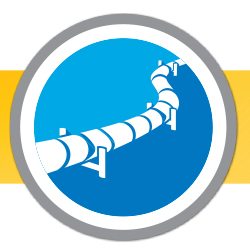
Sales productivity is at the heart of company profitability, yet too many salespeople pursue prospects who appear interested, but do not have approval power or are only interested in “free consulting.” This can drain sales productivity and profitability.
To avoid wasting valuable time and sales resources, create an ideal client profile – the characteristics of your best clients. Empowering sales professionals with a clear understanding about whom they should target, and likewise disqualify, allows them to focus on the best opportunities and secure measurably higher win rates.
The easiest way to develop your ideal client profile is to analyze your best clients and develop a list of the characteristics that they share in common. For example, you might begin with:
- What industries do they represent?
- What is the company’s annual revenue (can be a range from X to Y)?
- How many employees work at the company?
- How many locations do they have domestically? Abroad?
- What is their buying process?
- What triggered them to take action and want to buy?
- Why did they select your company? Or you?
- What is the key decision-maker’s title?
- Who authorized the budget and why?
- What return on investment did your solution generate for your client?
- Who among your clients will testify to the value they received?
- How did this solution improve their business?
After developing your ideal client profile, create the list of qualifying questions the sales team should ask a prospect, in the first or second meeting, to determine if they are a viable prospect. At the very least, the questions should help the sales professional understand the prospect’s current and desired business situation, scope of potential engagement, and readiness to buy. Understanding this information will reduce the risk of the salesperson mistaking interest for opportunity. Interest is a curiosity or a nice to know; opportunity is a validated desire with a confirmed capability to commit.
Building a new habit takes time and practice, so it is essential to train the sales team. After explaining the value and desired outcome of targeting only ideal clients, the team members need to practice asking the qualifying questions and knowing how to respond to the different types of answers they are likely to receive. In these case studies, include scenarios where the prospect avoids answering questions directly, or redirects the conversation – this is often a sign that the prospect may not be in the market for your offering, but wants free consulting. Beware! These scenarios can consume tremendous company resources with no payoff.
To demonstrate the value of what this approach would mean to your company, analyze your current sales pipeline. Identify how many real prospects are in the queue and what percentage will close within 90 days. Many executives are content with a 20 to 25 percent close rate, but few have taken into consideration the real costs. For an average manufacturing company, a proposal that requires some engineering input can cost $3,000 to $15,000 to produce. Imagine the financial impact to your company if your close rate rose to 90 percent. You might say, “That’s crazy!” Except it’s not. Companies that pursue only high probability opportunities have smaller pipelines, but close more than 90 percent of the deals in their pipeline in less time.
Training sales professionals to pursue prospects that meet their ideal client profile and qualify early generates, on average, a 20 percent shorter sales cycle, 13 percent higher deal size, and more than 100 percent improvement in close rates. What uptick in productivity, revenue and profit would your company yield if your numbers were consistent with these?